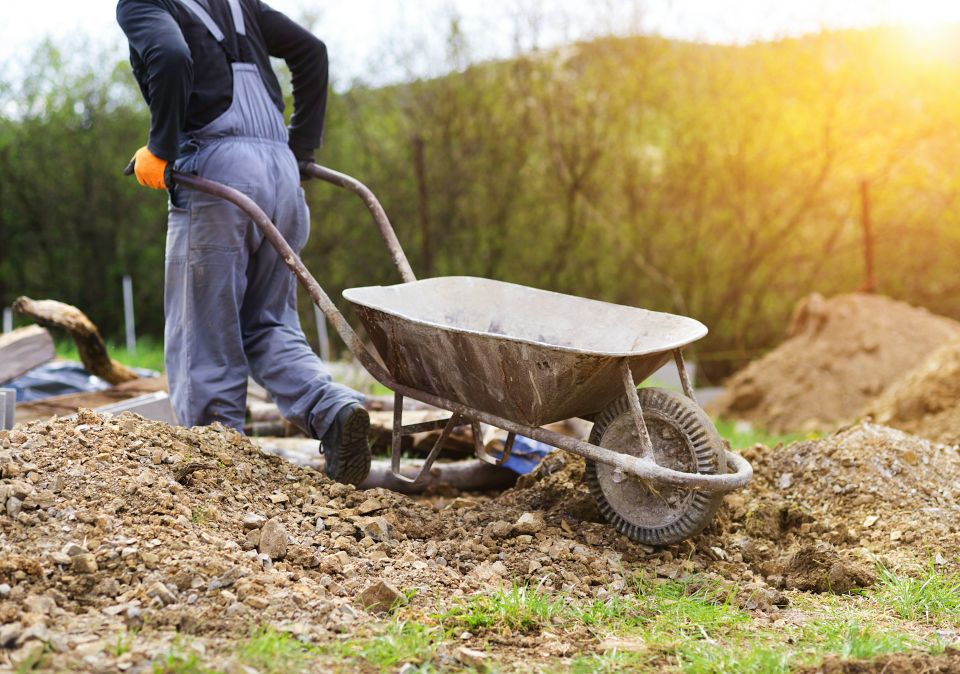In today's rapidly evolving construction landscape, the demand for efficient, sustainable, and durable solutions has never been more critical. Soil Cement - the process of mixing soil with cementitious materials - offers a solution to this challenge by combining the inherent benefits of soil stabilization with the strength and durability of cement. With its unique ability to transform native soils into a construction-ready material, Soil Cement has become an essential part of modern infrastructure projects ranging from roads to building foundations.
In this in-depth article, we will explore the world of Soil Cement and its numerous advantages for infrastructure projects. We will discuss the science behind Soil Cement, including the role of cementitious materials and the critical factors for success. Furthermore, we will delve into the various applications of Soil Cement in infrastructure development and provide expert tips for designing, constructing, and maintaining Soil Cement structures.
Join Terra-Firma Stabilization & Reclamation as we illuminate the potential and versatility of Soil Cement in building a sustainable and durable foundation for our infrastructure networks. We are your trusted partner in unlocking the full benefits of Soil Cement for your next construction project. Read on and learn how Soil Cement can revolutionize infrastructure construction and create a stronger, more sustainable future.
Soil Cement: Expanding the Durability, Strength, and Sustainability of Infrastructure
1. Unraveling the Science Behind Soil CementSoil Cement is a unique blending of soil and cementitious materials, creating a durable, cost-effective, and sustainable construction material. The chemical reactions between the soil, water, and cementitious materials result in the formation of cementitious compounds that bind the soil particles together, significantly improving mechanical properties such as strength, stiffness, and durability. Key factors affecting the success of Soil Cement include:
a. Soil Type: The type of soil, its grain size distribution, and mineral composition influence the soil-cement reaction and the final product's properties.
b. Cementitious Materials: Various cementitious materials, such as Portland cement, fly ash, and lime, can be used in Soil Cement depending on the soil properties and desired outcome.
c. Water Content: Proper hydration is crucial to ensure the required chemical reactions occur and that the Soil Cement mixture can be compacted effectively.
d. Admixtures: Chemical admixtures can be added to Soil Cement for specialized applications, such as accelerating or delaying setting times or enhancing workability.
2. Benefits and Applications of Soil Cement in Infrastructure ProjectsSoil Cement's unique properties make it an attractive choice for a wide range of infrastructure projects. Some of the key benefits and applications include:
a. Road and Highway Construction: Soil Cement can be used as a base or sub-base layer for new roads and highways, providing a strong and durable foundation that resists cracking and rutting.
b. Airport Runways: The increased strength and durability provided by Soil Cement make it an ideal choice for constructing airport runways, taxiways, and aprons.
c. Embankments and Retaining Walls: Soil Cement offers an environmentally friendly and cost-effective solution for creating stable embankments and retaining walls, reducing the need for imported fill materials.
d. Building Foundations: By stabilizing the soil beneath building foundations, Soil Cement helps to minimize settlement and ensures long-lasting structural integrity.
e. Erosion and Sediment Control: Soil Cement can be used to create vegetated slopes and drainage channels, providing robust erosion and sediment control solutions.
3. Designing and Constructing Soil Cement StructuresTo ensure the successful implementation of Soil Cement in your next infrastructure project, consider the following design and construction factors:
a. Soil Investigation: A thorough investigation of the existing soil conditions is crucial for determining the appropriate cementitious materials, dosages, and admixtures required.
b. Mix Design: Conduct laboratory tests to develop an optimized mix design that meets the project specifications and provides the desired performance characteristics.
c. Construction Techniques: Utilize specialized equipment and construction methods, such as pulverizing and mixing machines, to ensure proper blending and compaction of the Soil Cement mixture.
d. Quality Control: Establish a comprehensive quality control plan, incorporating testing and inspection protocols, to ensure the Soil Cement structure meets or exceeds performance expectations.
4. Maintenance and Longevity of Soil Cement StructuresProper maintenance and monitoring are essential for maximizing the service life and long-term performance of Soil Cement structures:
a. Periodic Inspections: Conduct regular inspections to identify any signs of distress, such as cracking or uneven settlement, and implement timely repairs to prevent further deterioration.
b. Preventative Maintenance: Ensure proper drainage and erosion control measures are in place to protect the integrity of the Soil Cement structure.
c. Vegetation Management: In cases where Soil Cement is used to construct vegetated slopes or channels, maintain the vegetation to promote soil reinforcement and prevent erosion.
d. Load Restrictions: Monitor and enforce load restrictions on roads and bridges constructed with Soil Cement as a base material to prevent excessive stress on the structure.
Soil Cement - The Foundation for Sustainable InfrastructureSoil Cement offers a compelling solution for developing long-lasting, eco-friendly, and cost-effective infrastructure projects. By understanding the science, benefits, and applications of Soil Cement, construction professionals can tap into its potential and pave the way for more sustainable growth and development.
Trust Terra-Firma Stabilization & Reclamation to provide expert guidance and support for implementing Soil Cement in your next construction project. With our experience in asphalt pulverization, soil improvement and modification,
soil stabilization, and full-depth reclamation, we can help you create a solid and lasting foundation for your infrastructure needs. Contact Terra-Firma Stabilization & Reclamation today to discuss customized soil management solutions tailored to your project's specific requirements, and let us help you build a stronger, more sustainable future with Soil Cement.

